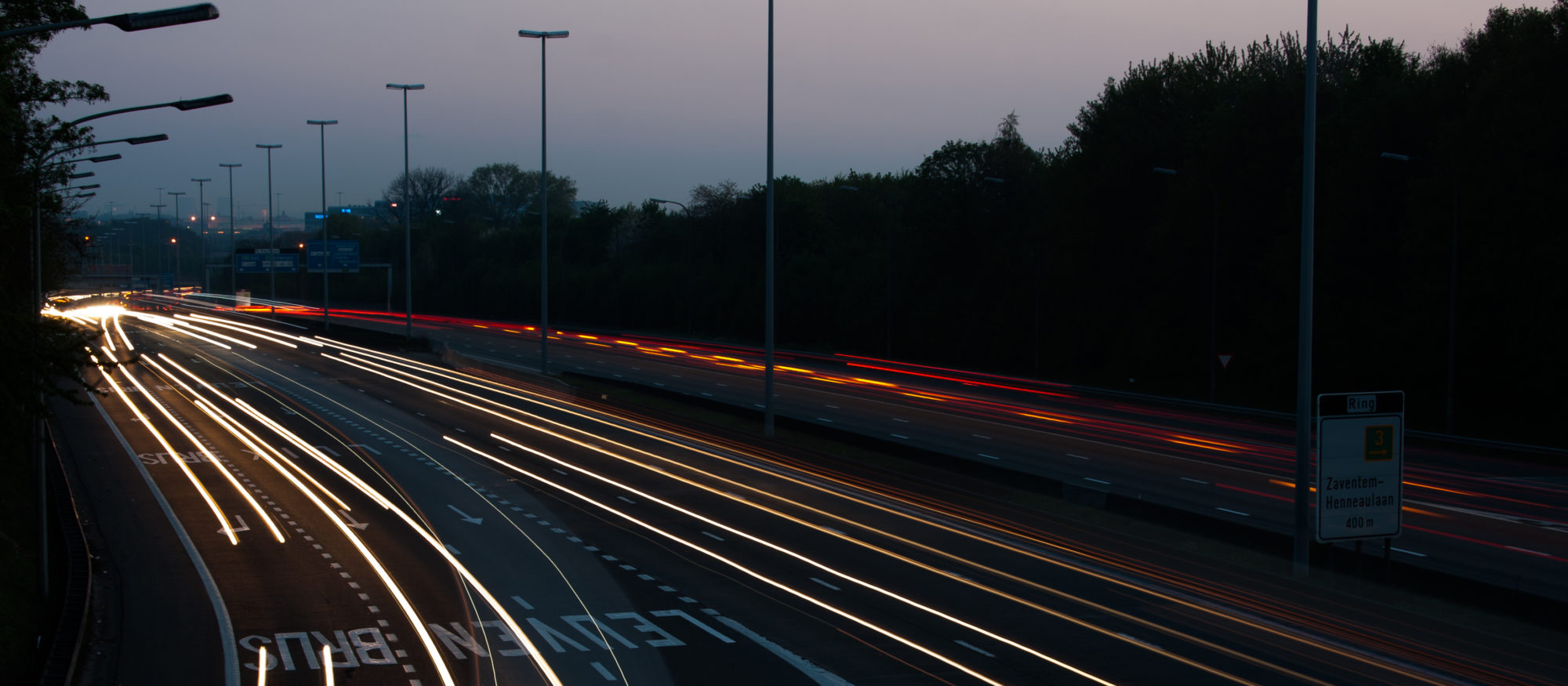The video by Tom Scott shot at the Lübeck eHighway test site shows the catenary trucks in action. He nicely explains the basic principles and also talks about the importance of return on investment for the infrastructure operator.
Visiting eHighway on A5 in Hessen near Frankfurt Airport
Last week was exciting. I had the opportunity to join a visit of the eHighway site in Hessen near Frankfurt Airport. A strech of motorway A5 there is equipped with catenary to supply trucks with electricity for propulsion.
Currently there are only diesel hybrid vehicles in service on that part of the motorway, but it is technically possible to equip other vehicles, e.g. battery electric, hydrogen fuel cell, LNG hybrid, for use on the eHighway network. My preliminary calculations for the Logibat project show that battery electric vehicles have the biggest potential. In the project we are investigating the socio-economic impact of implementing such catenary network in Flanders, Belgium.
I am confident this technology has a bright future for decarbonising road freight.
How long will it take to arrive? I think with catenary for road transport we are in the same development stage as with electric vehicles in 2011 when the first ones existed, you could see the advantages but there was no adoption yet. Today, when buying a new car, people think strongly if they are ready to be stuck with an outdated polluting technology, not being allowed to drive in cities for the lifetime of their car. With eHighway today looks like 10 years ago with EVs. The technology and standards are almost there, the economics say it is a logical choice, but there is no wider adoption yet. I think for road freight the economic incentive is stronger. But also, the governments have a role to play to allow this to happen. I hope it takes 10 years or less.
Some photos from the trip:
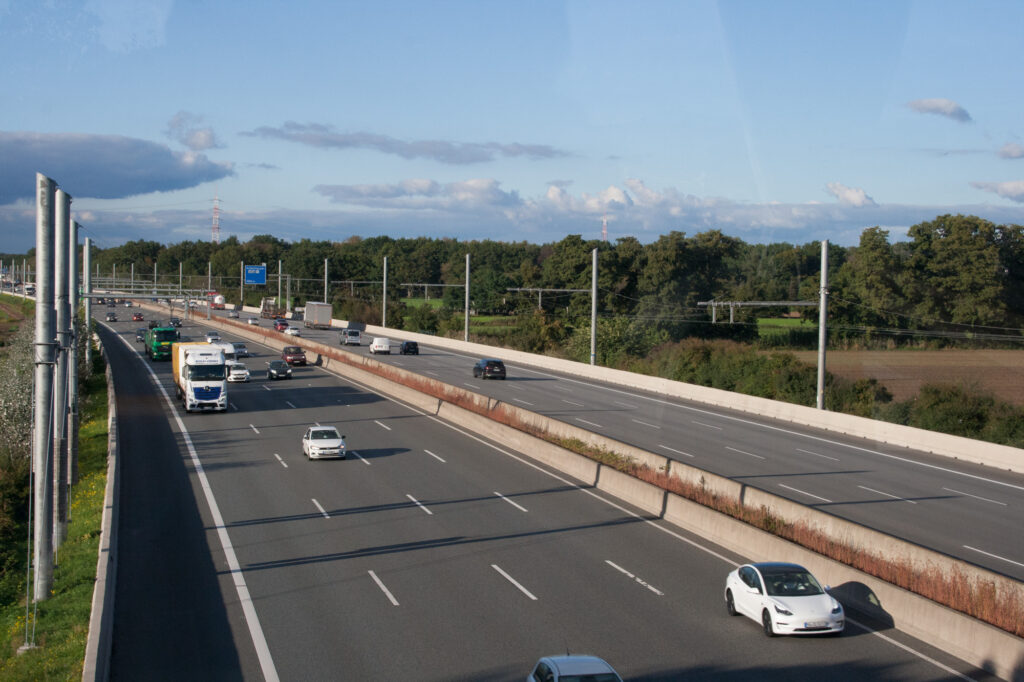
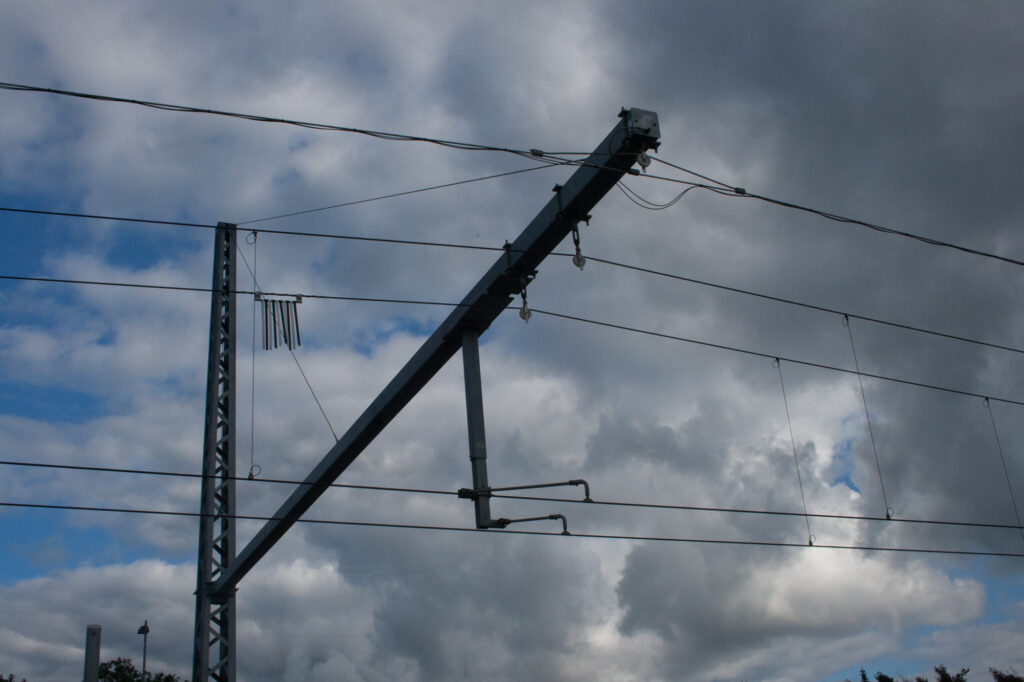
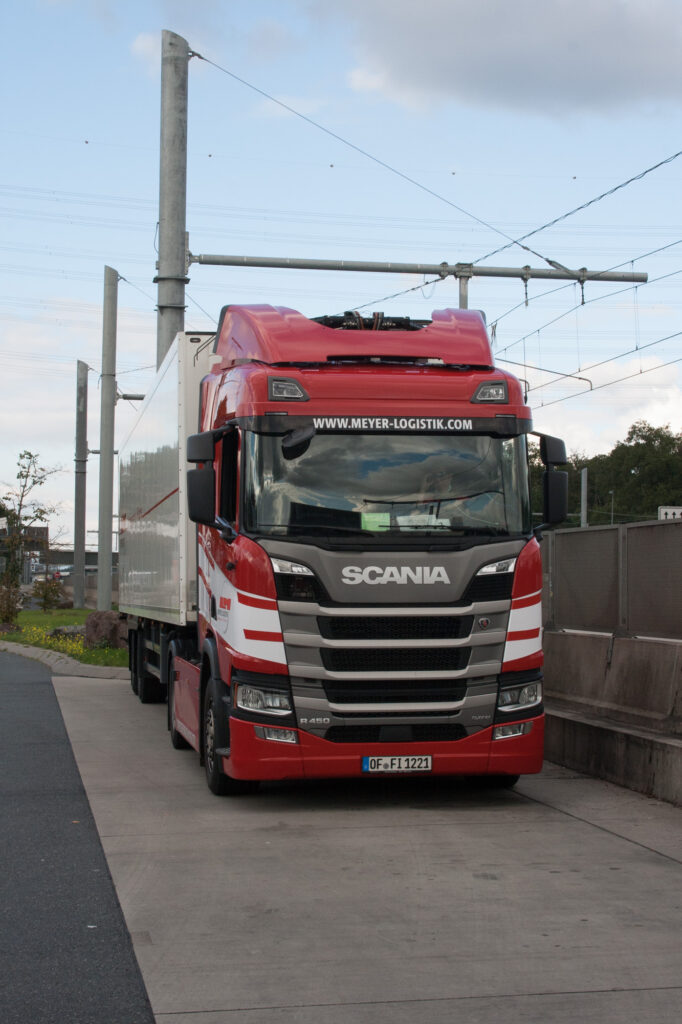
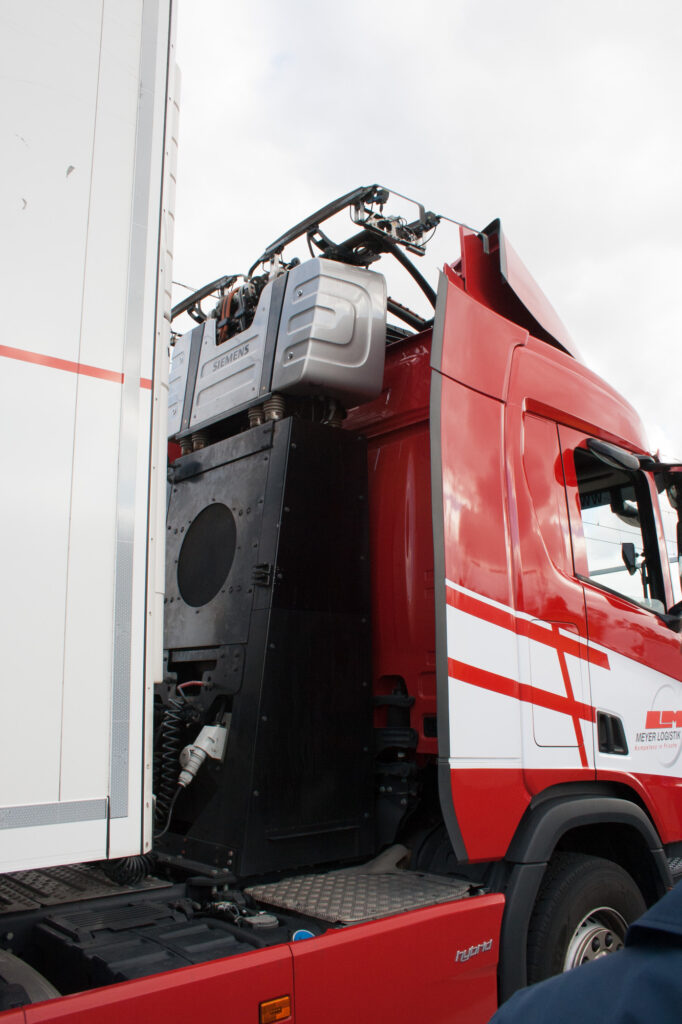
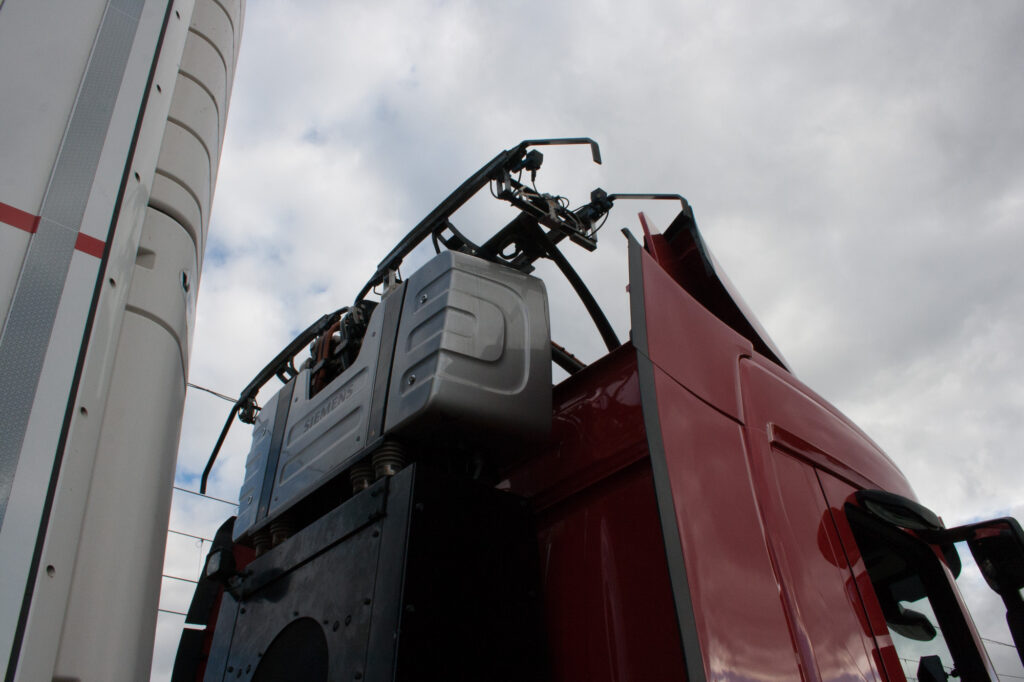
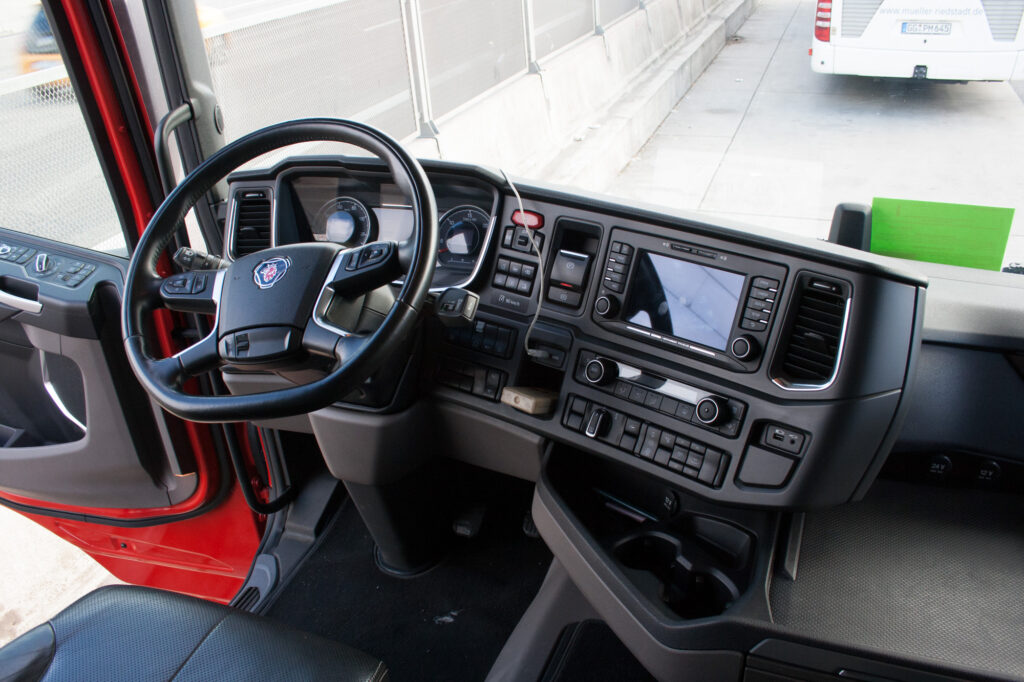
Starting work on Logibat project
Today I am excited to start working at University of Antwerp on the Logibat project to investigate the socio-economic impacts and optimal network for catenary trucks in Flanders, Belgium.
More info on Logibat project can be found following this link https://vil.be/en/project/logibat/
Exciting new charging initiative in Sint-Pieters-Woluwe
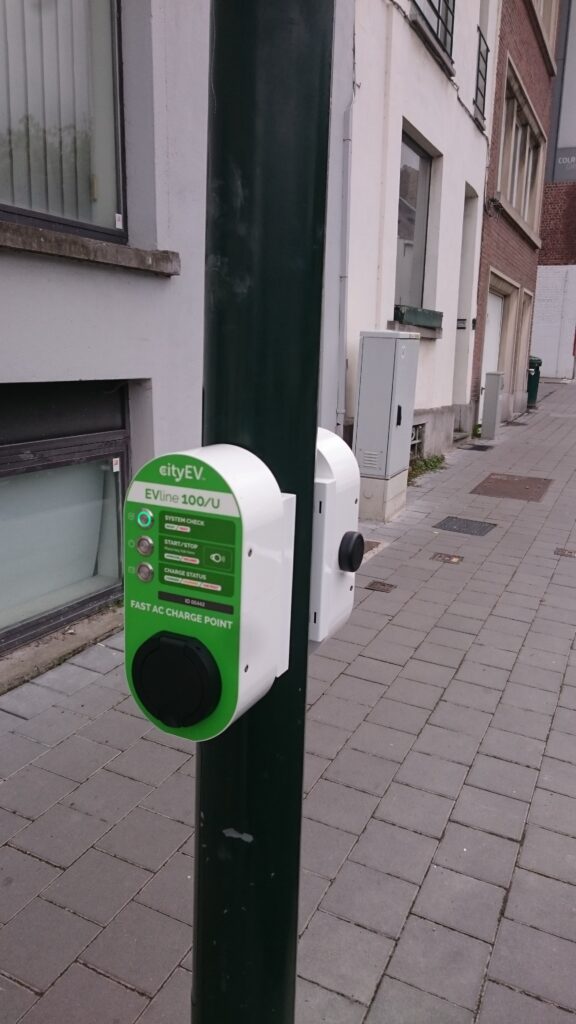
I was walking on the street in my neighbourhood and noticed a new charging initiative that Sint-Pieters-Woluwe commune is testing. Using the electricity grid of street lighting they have installed new slow charging points for electric vehicles.
To me this seems a great solution. It leverages the existing electricity supply infrastructure, requires no additional space and solves the main issue that electric car owners without garage have – availability of slow charging where you park your car.
If only a part of the lamp posts in the cities had chargers on them, that would remove one of the main issues that hinder the electrification of private transportation – unavailability of slow charging where you park.
I have not tested the speed of those installations yet, and do not know if they are 1 of 3 phase. But for overnight parking it seems that even 16A one phase connection would be sufficient. More is always better – that increases the number of use cases for this infrastructure.
What’s the ONE Thing you can do such that by doing it everything else will be easier or unnecessary?

This weekend I read the book of Gary Keller and Jay Papasan “The ONE Thing”.
The authors claim that devotion to only one thing at a time allows achieving extraordinary results. In order to do that they suggest blocking a considerable number of hours every day for doing your one thing.
For determining what your one thing today is, they suggest asking the question: “What’s the ONE Thing you can do such that by doing it everything else will be easier or unnecessary?”
I think they are right. I have noticed, I am more productive when all my energy of a day is devoted to just one task, instead of multitasking. I achieve a lot on that task and the quality of the outputs I produce is substantially above my own average. Also, a correct focus on which task to do is important.
If you are after extraordinary results, this book is a good read.
Strange measurement units in European EVs
I try to buy local and think that it is wasteful to transport freight on large distances if goods can be produced locally, especially cars. But it seems that for electric vehicles it is reasonable to make an exception until Tesla starts building their vehicles in Germany this July or August.
In the electric vehicle fan community European electric vehicles are said to be of lesser quality. They have worst battery performance, they lack features that are important to EV owners, software tends to be glitchy and they have less power than their rivals made elsewhere.
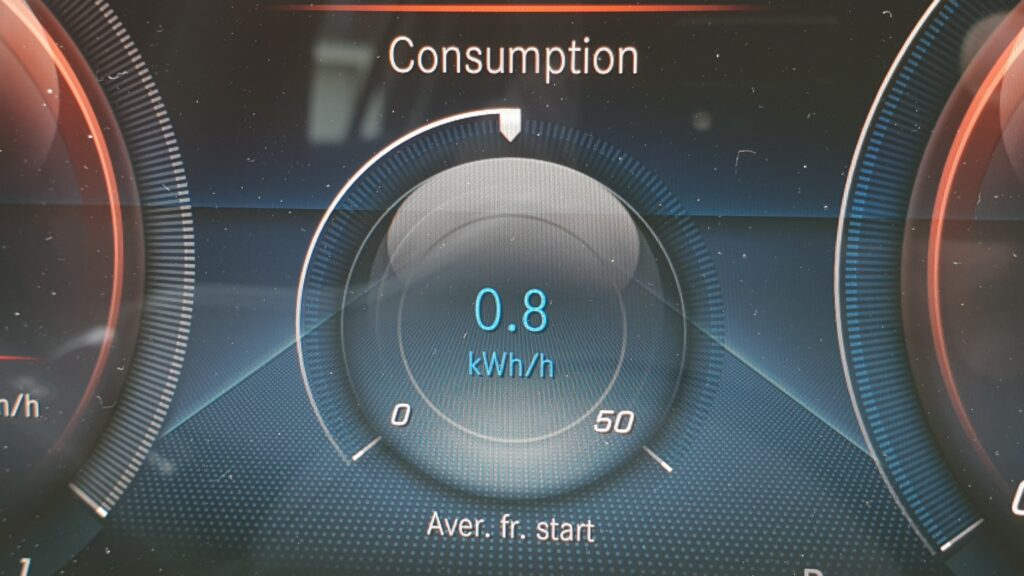
The reason seems to be the attention to detail, and I think this photo of power consumption meter from Mercedes EQA 250 is examplary of that. There clearly is something wrong with the approach taken in Europe if an engineer can say that power can be measured in kWh/h instead of kW. Also, it is rather strange to come up with a scale from 0 to 50 where 0.8 is in the middle.
Honest ad from Australia makes fun of EV policy
Most governments arround the world are promoting adoption of electric vehicles in one way or another. Unfortunately that is not the case in Australia, where the government is making things difficlut for adoption of EVs.
An honest ad has just come out making fun of the government policies, which is refreshing to see. According to the video the Future Fuels Strategy in Australia is aimed at sustaining the dependence on oil and allow other measures such as extra annual tax on EVs of 300 Australian dollars.
Fragility of supply chains and the opportunity of regionalisation
The supply chains are vulnerable. The incident that is happening these days with the ship stuck in Suez Canal clearly shows the risks involved in transporting large volumes of goods over big distances. For the shippers the associated risks are an expense that should, and I would predict that it will, be included in their cost calculation to a greater extent.

As some of the developing countries are reaching higher development levels, which is associated with higher labour costs in the manufacturing sectors, companies are considering production relocation in order to save costs. This shifts production from the most advanced developing countries, e.g. China, to the less advanced ones. One of the main beneficiaries currently is Vietnam due to its cheap labour and manufacturing heritage. Countries like Indonesia, Laos and Cambodia are also benefitting.
The rising supply chain costs are also presenting opportunities for other countries that are closer to the main consumption markets, like Mexico and Turkey for the United States and Europe. In the next years I think this could result in greater regionalisation of supply chains, where the production and consumption location is within the same world region.
Mobility Package I: European Commission publishes study results on vehicle return and cabotage restrictions
The European Commission has just published the results of the studies on vehicle return and cabotage restrictions, which were adopted as part of the Mobility Package last year.
I have been wanting to see what the impacts are of those policies to confirm my suspicions. According to the studies, the impacts of those policies result in up to 3.3 million additional tonnes of CO2 emissions annually, which is comparable to a year’s worth of total transport emissions in Estonia. No surprises.
The two studies are a very good argument for the European Comission to discuss ending these two policies. They go against the Green Deal objectives and hinder competition.
Certificate: Data Scientist in Python
I am very proud to finish my Data Scientist in Python training with Dataquest. Here is my shiny new certificate…

It took 8 months of intensive learning of several hours almost every day. I am now able to perform analysis on large volumes of data that don’t fit in Excel and implement some machine learning algorithms.
Now I know what I don’t know! There is so much more…
